Artists
Enric Montes
(Barcelona, Spain 1969 )
The photographer’s poetics is based on the narrative sequence formed by his images and which, page by page, book by book, build up his personal, fully coherent universe.
The colour in his photographs is a flash of light that shines at maximum intensity before fading out, swallowed by darkness.
These are pure, bright colours that interrelate, interact, and mark the rhythm by which we interpret his images.
Vertical images, tremulous like waves of water and faint shadows about to disappear.
Reality is full of interstices, small cracks and lost highways that lead us to a dreamlike world infused with the magic of things.
The metaphor of the journey articulates a photographic oeuvre that is inspired by literature and film, and which always waits expectantly for the extraordinary. Montes’s lyrical fireworks create a pendulum movement that interacts in all his photographs.
These images are from Enric Montes’s work El domador de sueños [“The Dream Tamer”] which, together with El viaje vertical [“The Vertical Journey”] and El eco de las cosas [The Echo of Things], completes his trilogy El buscador de prodigios [“The Seeker of Prodigies”].
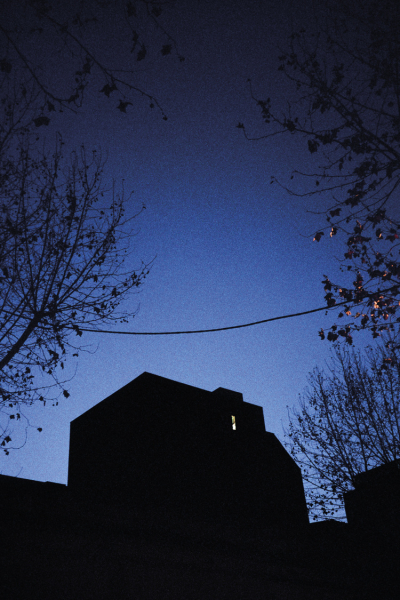
Trine Sondergaard
(Greena, Denmark 1987)
Some photographers use the camera to listen to people's hearts. To look into their eyes and discover to the landscape of a face. That is why the portrait remains one of the most popular genres in the photographic art, although it does not receive great recognition or enjoy much prestige at present.
The square, black-and-white works in Trine Sondergaard's Untitled series comprise a series of portraits of mature women, their faces hidden by their hair, which envelops them like a cloak.
The face is the reference-point and the symbolic resting-place of our identity; the physical appearance of the face certifies our personality. However, the subject portrayed never owns her image, and to take a single part to represent the whole, to consider the face as a narrative emblem of the self, is little more than a consensual fiction. By hiding the faces of these women, Sondergaard challenges the classic idea that links the face to the portrait while still maintaining its strange link with the truth.
According to Margarite Yourcenar, time is a great sculptor, and in these images we can see the different shades of grey in the women’s hair, symbolising the aging process. In the negatives, we observe white marble sculptures streaked with faint black lines.
Long hair has traditionally been a symbol of feminine beauty and sexual attractiveness, but always in the prime of youth. These photographs, full of strength and subtlety, refute this cultural stereotype to reveal the sensuality and beauty of the women portrayed.
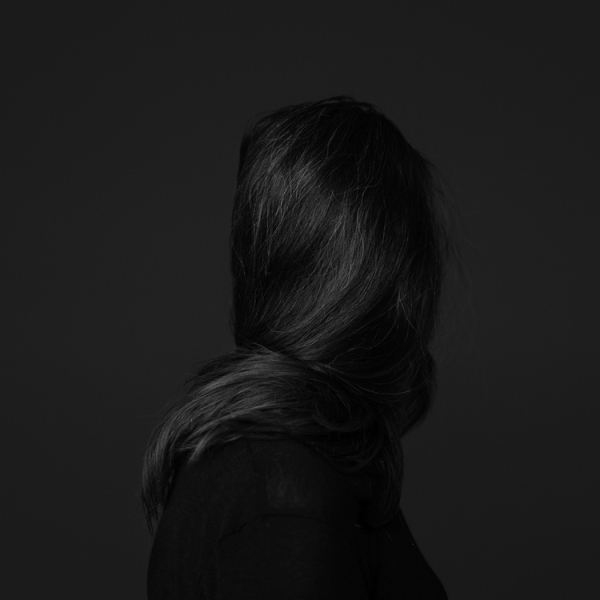
Gaël Bonnefon
Foix, France 1982
Gael Bonnefon's radical experimentalism is not an empty gesture. Rather, it is at the service of a vision of the world based on how terrible and beautiful it is to be alive. The instability and fragility of photographic materials; accident and error; the emotional and intuitive elements in the images: all this forms part of Bonnefon's aesthetic singularity.
His use of expired film and the cross-process technique – in which slide development chemicals are employed to produce the negative and vice versa – combine to create hypersaturated, unreal colours. This altered colour palette is blended into his grainy, shaky, blurred, overexposed images.
These raw photographs reveal a ghostly, ferocious, deformed reality, a reality in which there is a constant tension between the trivial and the surprising.
This is an expressionist art, reflecting pain, that also embraces everyday moments of fullness and beauty. Exterior spaces, the limits between the city and nature, the intimate territory of the home, fading bodies about to be swallowed up by the landscape and fog, faces in the foreground outlined by the frontal light of the flash, the brutality of fire, the milky blue of the sky and the nostalgia of days.
In short, photographic work full of anxiety and stillness.
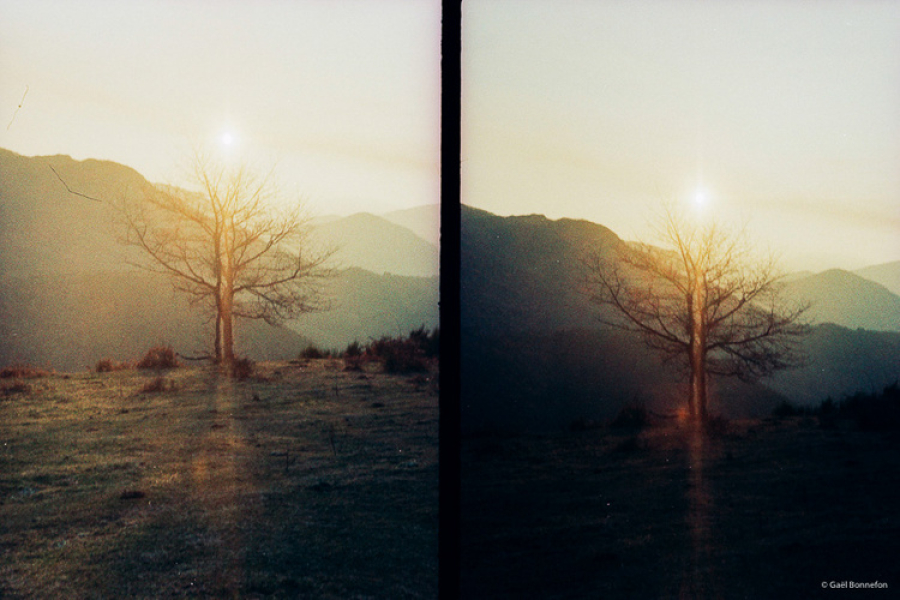
António Júlio Duarte
(Lisbon, Portugal 1967)
The title taken for this project, Against the Day, suggests the idea of “against the daylight”, that is to say, backlighting.
In its literal sense, the phrase also refers to the desire to preserve the memory and life of the passing of time.The photographs for Against the Day were taken in the United States in 2009 and 2018, when Duarte accompanyied a group of musicians on tour, visiting the cities and venues where they were playing.
Although its actual geography is never specified, the landscape that Duart photographs might well belong to the South, the Deep South described by so many North American writers.
The images, in their saturated colours, are illuminated by the light available outdoors and by ruthless, frontal flash photography indoors. The circle is a motif that is repeated in these square photographs, shot using a Mamiya 6 camera.
In them, Duarte deliberately breaks down reality into fragments to suggest estrangement from a world beyond our comprehension. Here we find sad, desolate, spaces, objects isolated in their solitude, menacing nature and portraits of the characters that inhabit this peculiar, opaque, violent cosmos.
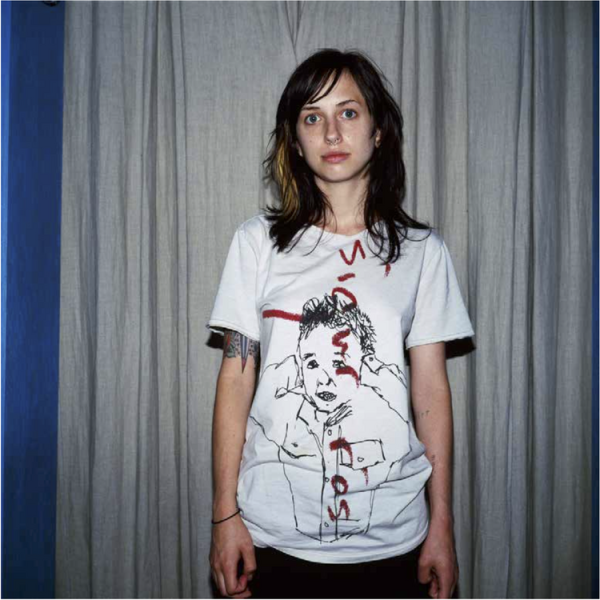
Massimiliano Tommaso Rezza
(Roccasecca, Italy 1967)
A psalm is a religious song of praise to God. Paul Celan’s poem Psalm, which inspires this project, is a hymn to the pain caused by the non-existence of God. As the photographer himself writes: “The sky under which men live is empty. Nobody answers our call”. God is dead and has disappeared from our lives.
The poem is taken from Celan’s 1963 The No-One’s Rose collection, and the English version is a translation by John Felstiner.
Massimiliano Tomaso Rezza does not attempt to illustrate the poem, but to generate a counter-melody that establishes a dialogue with the words. Simple, repetitive images in washed-out black-and-white, with hardly any contrast, the product of unretouched scans of negatives, with many specks of dust, scratches and light leaks.
Rezza’s Psalm is a visual poem that sings of emptiness and uncertainty in a new language. As the subtitle puts it, “a counter-melody to Paul Celan’s poem Psalm”. A voice that sings over the phrasing of a secular prayer.
On April 20, 1970, Paul Celan jumped into the waters of the Seine from the Mirabeau Bridge.
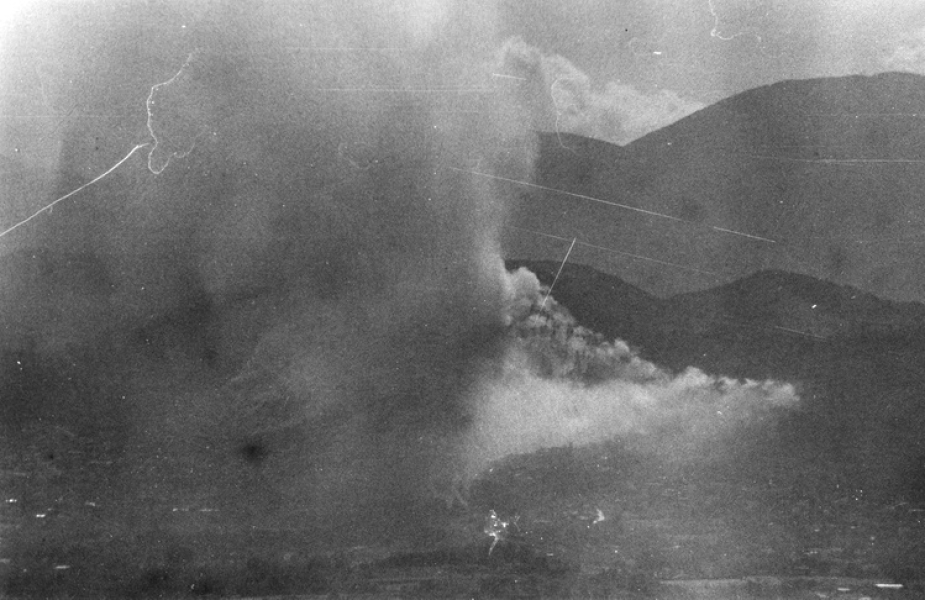
José Ramón Bas
(Madrid, Spain 1964)
According to the art critic Christian Caujolle, José Ramón Bas is an “unclassifiable poet” and “a seasoned traveller who seems a lot like those kids who can see the wonder of things and invent wonderful toys from the objects around them”.
Spontaneity and the playful component of creation are essential aspects in this photographer’s process of experimentation with materials. His square images, taken using a toy camera whose its plastic lens creates marked vignetting at the corners, are combined with collage, drawing and writing.
For José Ramón Bas, the negative is the starting point to intervene on the image through different artistic and textual procedures.
His Icarus project has been shown in different formats, but here we can see his Brazil Travel Notebook in which, starting from a real child named Icarus, he represents the dream that many children have of flying, their need to feel free, for they are locked down, trapped in unjust societies.
His colour and black-and-white images are taped to the pages of his notebook, framed in pencil, and marked by text and drawings. These are stained photographs, scribbled on, even battered, and inserted into an intimate travel diary and that turn this work into an artist's book or, rather, a poem-object.
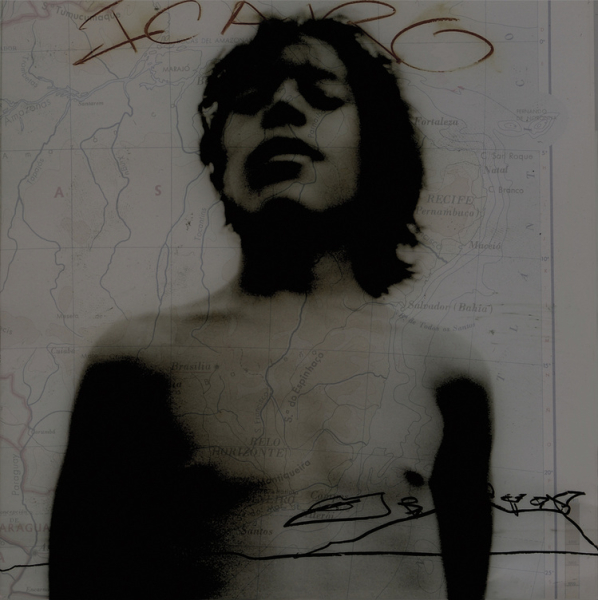
Arja Hytiäinen
(Turku, Finland 1974)
To the Finnish photographer Arja Hyytiainen, photography is a means of entering the lives of others and documenting her own personal experiences. A kind of auto-fiction that fuses dream and reality.
Her photography, almost always in black and white, is no longer as dark as her earlier work, but this does not mean that it is any less challenging.
Night light has given way now to the bright light of days in her project Ile d’Enfance (“Island of Childhood”), a work composed of black-and-white photographs rich in delicate greys.
The collection explores childhood and identity from the point of view of the photographer’s daughter, and her own memories.
Now living in France, every summer Hyytiainen travels to an island in Finland with her family, where she shares the landscape and memories of her own childhood with her daughter. Pre-travel nerves, meeting up with relatives, adventures, bumps and bruises and scraped knees, infinite spaces, the death of beloved pets and, finally, once more, farewells. In childhood, summers are eternal, and in these photographs we see a little girl in contact with nature who gradually discovers the truth, how hard life can be. Meanwhile, camera at the ready, a mother watches her daughter grow, year by year.

Neus Solà
(Barcelona, Spain 1984)
With their richly poetic air, Neus Solà's photographs bring us closer to both the myth and the reality of hijras in India.
Considered a third gender, according to Hindu mythology hijras have divine origins, which is why in the past they were highly respected figures with a certain social status. Even today, they are believed to have the power to bless or curse, inspiring fear and awe.
Under British colonial rule, they were considered a threat to morality and good customs and became one of the most marginalised communities in Indian society, condemned to begging and prostitution.
The title of the Project, Nirvan, refers to the process of ritual emasculation that hijras undergo.
In her book Neither Man nor Woman, the Hijras of India, the anthropologist Serena Nanda has the following conversation with one of her interviewees:
“Why must you have this operation? I asked Kamladevi. She answered by saying that hijras have many powers, but only if they have the operation”.
She then told this story:
There once was a king who asked a hijra to show him her power. The hijra clapped her hands three times and immediately the door of the king's palace opened automatically, without anyone touching it. Then the king said, “Show me your power in some other way.” By the side of the road there was a thorny cactus. The hijra just took the thorn of the cactus and emasculated himself. He showed the king that he had the power. The hijra just stood there with the blood oozing out and raised his hand with his penis in it. Then the king realized the power of the hijras.”
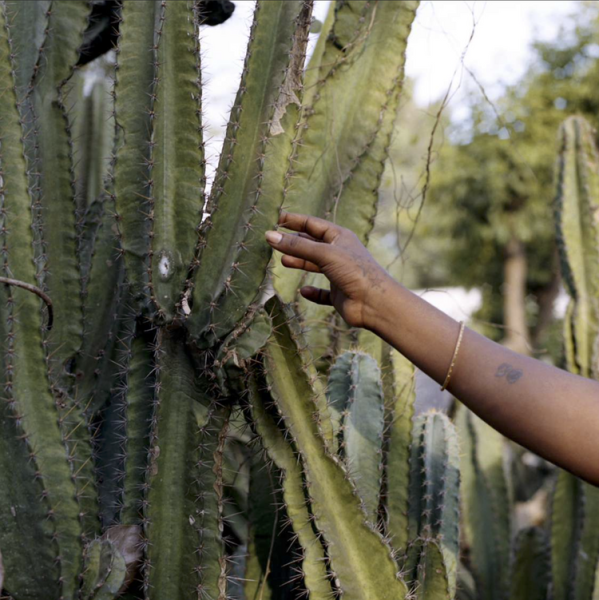
Salvi Danés
(Barcelona, Spain 1985)
We remember things that never happened and we pursue things that have never existed. History was born with writing, but we perpetuate myths that are lost in the mists of time.
Cypsela is the name of a mythological city overlooking the Medes Islands in what is now Empordà county, Catalonia, according to Avienius, a Latin writer from the fourth century AD, in his poem Ora Maritima (The Sea Coast).
“That the city of Cypsela stood here is now just a memory, since the rugged ground conserves no trace of that ancient city.”
According to legend, the city would was swallowed up by the sea. A mysterious myth that is still kept alive by the inhabitants of the area.
Salvi Danés's intense black-and-white photographs draw a visual map of a dreamed territory. A kind of personal diary that is narrated through the collective imagination of the Empordà. Nostalgic images that suggest the persistent presence of something that no longer exists.
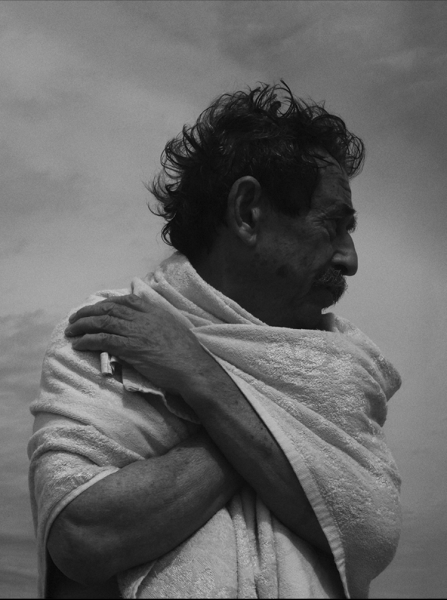
Dimitra Dede
Athens, Greece 1974
After the death of her mother, the photographer Dimitra Dede embarked on a journey to discover the glaciers of Europe. “At her funeral, I kissed her forehead, as is the custom in Greece, and I was surprised by that icy contact, which contrasted with the June heat”, she says. A metaphorical story that suggests the key to Dede’s work Mayflies, an exploration of the contrast between the warmth of the maternal embrace and the freezing cold weather of loss.
In Dede’s photographs, nature and the body merge in an anguish-filled world in which each element wants to be reborn, to return to the maternal womb and be protected from death.
“Life is ephemeral,” Dede goes on, “Motherhood is a fight for perpetuation. Is it just an illusion?”
Mayflies is the name of an order of insects that are born, reproduce and die in a single day.
Dede’s photographs reflect this fight to the death for life, for they are battered and damaged during the creative process, subjected to the heat of fire and to acid, and coloured with violence. The images themselves seem to fight between life and death.
A painful mourning process that reveals an agonising but terribly beautiful universe.
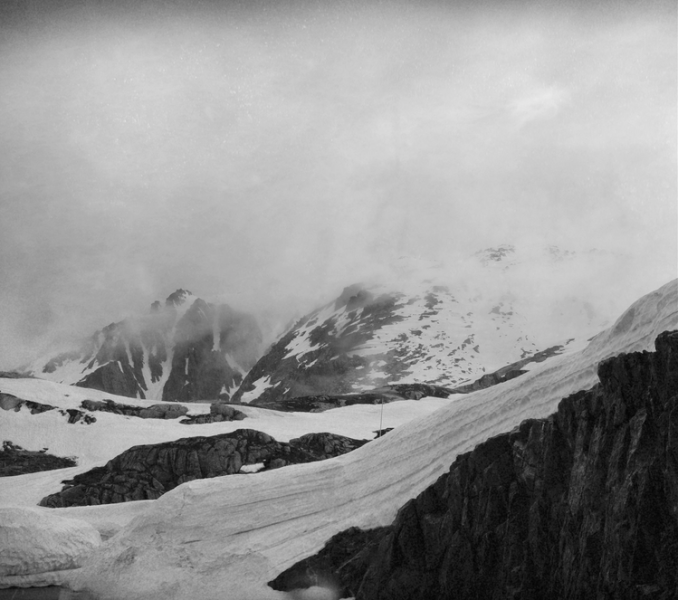
Yasmina Benabderrahmane
(Rueil-Malmaison, France 1983)
In her project The Beast, A Modern Tale, Yasmina Benabderrahmane poetically documents the tensions between tradition and modernity in present-day Morocco. All the images that form this work are made up of stills taken from her film work, recorded on Super-8. They include images in both colour and black and white that the artist can reframe according to exhibition requirements. After a fourteen-year absence from Morocco, Yasmina began filming the construction of the Grand Theatre of Rabat in the Bouregreg Valley, the site of what is to be a major cultural centre.
Changes in the physiognomy of this ancestral land, once known as the Valley of the Potters, are interspersed with family scenes such as the celebration of the feast of the lamb. The show tells a visual story in which the protagonists are the artist’s grandmother, her uncle, and the shadow of this beast under construction, which devours the landscape. A modern tale which interweaves history and intrahistory.
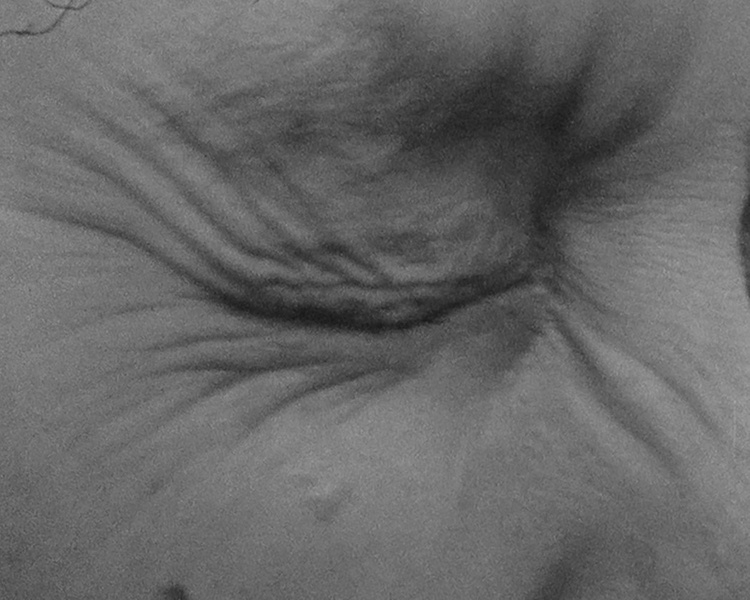
Rosa María Florensa Palacios
(Barcelona, Spain 1994)
Trap is the new punk. Accompanied by a look and lifestyle that might seem corny and in bad taste to older people, this musical style is characterised by the use of never-ending autotune and a repetitive rhythm that can be fused with other genres such as reggaeton.
The lyrics are aimed at young people from the more disadvantaged classes, those worst hit by crisis and unemployment. They sing about problems in the street, violence, sex and drugs, all uncensored, using a language that rejects academic norms and is full of Anglicisms.
Trap tells you what you know and what you have lived through. The work of the photographer Rosa María Florensa Palacios documents from within this generation of young people that has emerged thanks to trap. Young people who have adopted the trap lifestyle, dress, form of expression, dances and way of having fun. Her photographs form a visual diary that brings an authentic, honest gaze to bear as she portrays her personal world and circle of friends. This is a self-documenting process full of chaos and excitement, featuring in-your-face images and aggressive framing, full-on flash effects, expired colour film, and careless scans. A ballsy way of taking photographs that aim to capture the reality of the artist’s days and nights.
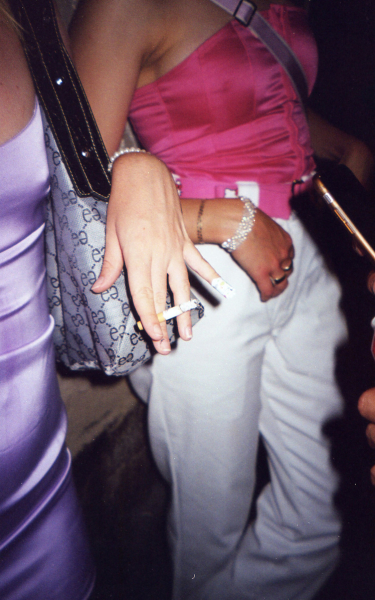
Leitmotiv
THE LIGHT OF WORDS. READING AND WRITING THE WORLD
We are made of images and words.
We read the book of the world to try to understand it and also to try to explain ourselves.
When we read an image of any kind, whether it is painted, photographed or sculpted, we always need the word for its interpretation.
Stories exist in time and images develop in space, but when we contemplate them we always add the temporality of narrative and fiction.
Since its appearance, photography has played a secondary role to narrative and almost always a servile role in relation to the word.
Photography was a good medium for illustrating text and many writers resorted to its use to document their descriptions. The photograph was the notary's signature that lent veracity to their work.
This traditional interplay between word and image linked the subjective character of the text with the supposedly objective character of the photograph.
Today it is clear to us that photographs have never been objective (they have never been a faithful mirror of reality) and that with respect to language they have a very weak meaning.
Photographs always need words to be read and interpreted.
We can say, then, that the Chinese proverb a picture is worth a thousand words would not be very accurate. In fact, its correct translation is as follows: a picture is worth 10,000 words.
There is a slight nuance in this second version that does not privilege one language over the other, but rather describes the concentration and evocative power of the picture as opposed to the descriptive detail of the word.
Western culture throughout its history has oscillated between its predilection for the textual and its fondness for the visual. Our civilisation has been marked by the influence of the Greek world and the tradition of the Judeo-Christian world. By the IDEA (in Greek eidos, vision) and the LOGOS (a reasoned word that the Latin translated as a verb).
Western thought profoundly shaped by Christianity and the Bible ended up taking sides with written expression and what theorists have called logocentrism.
Leonard Shlain's essay The Alphabet versus the Goddess takes the conflict between word and image a step further and relates the emergence of writing to the change in the social position of women and the imposition of the hierarchical and sexist forms of patriarchy.
Without going much further, it should be noted that the fundamental aspects of this conflict between image and word survive today.
In spite of the different nature of the two languages (textual and visual), their long coexistence in our cultural tradition has led to their equalisation.
We are capable of reading and interpreting (often naively or mistakenly) both a text and an image, and this ability makes us forget the differences between each of these technologies.
the differences between each of these communication technologies. The relationship between word and image is always a strange one.
The constant contact of word and image has made us emphasise their points of union and disdain everything that distances and separates the two spheres.
The verbal description of a landscape will never be equivalent to the photograph of the same landscape and conversely, the image of a Grecian urn, however beautiful and true it may be, can never replace John Keats' poem Ode to a Grecian Urn.
Text and image complement each other but are never interchangeable. They never convey exactly the same meaning.
According to the philosopher Joan-Carles Mèlich, reading is rereading. And he tells us that: ‘Nobody knows how to read because reading is not a skill that can be acquired once and for all, but a way of life, and nobody knows how to live’.
In his book The Wisdom of the Uncertain, he establishes a philosophy of the reading condition, an ethics of reading. And he explains that the human being is a homo narrans, a storyteller as well as a homo legens, a reader, even if he has never read a book.
‘To read and think the world is to separate oneself from it, to question it, to open up questions where before there were only answers and truisms’.
The beginning of thought is reading, and reading interpretation is always multiple, plural and infinite, or it will not be about interpretation at all.
The exhibition slogan for this year's La Nuu festival is The light of words, a motif that plays on the etymology of the word photography itself: writing with light. Words light the fire of images.
As we said at the beginning, we are made of images and words. We are obliged to look at and read reality, to interpret it despite uncertainty and the fear of being wrong. That is why we all like to make and contemplate photographs, as a way of reading and writing the world anew.












